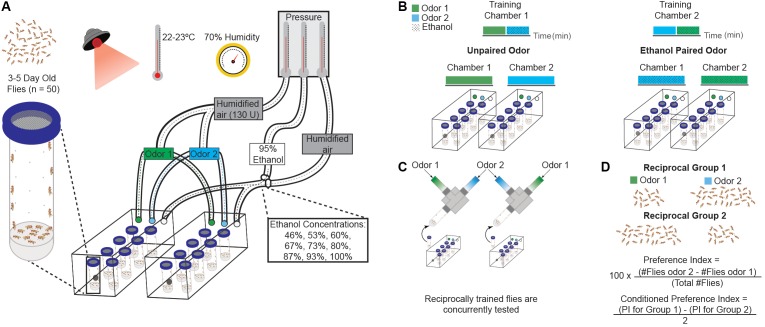FIGURE 1.
Ethanol conditioning assay. (A) Schematic of behavioral training apparatus and fly training conditions. Behavioral training is done under red light, with temperature and humidity controlled throughout. Male flies (n = 50) are transferred into perforated vials with 1 mL of 1% agar and acclimated in the behavioral boxes for 15 min with 130 U of humidified air. Air pressure for ethanol and humidified air is controlled to adjust the administered dose. A passive vacuum is present within the behavioral boxes for air/odorant removal. (B) Olfactory-cues are paired with vaporized ethanol during training. Varying ethanol concentrations are achieved by adjusting the flow rates of 95% vaporized ethanol and humidified air. Flies are trained with two neutral or appetitive odors: one unpaired with the ethanol and the other paired with ethanol. A reciprocal paradigm is used to control for innate odor preference. (C) Flies are tested with the two odor cues in a Y-maze (displayed above). Reciprocally trained flies are tested concurrently. (D) A preference index (PI) is calculated by subtracting the flies that move towards odor one from the flies that move towards odor two, dividing the resultant number by the total number of flies, and multiplying that number by 100. A conditioned preference index (CPI) is calculated by subtracting the preference index for odor two from the preference index for odor one and dividing the resulting number by two. A positive CPI value indicates preference, while a negative value indicates aversion. Each individual sample (N) is composed of 100 flies.

